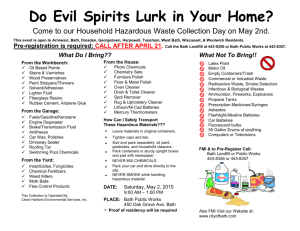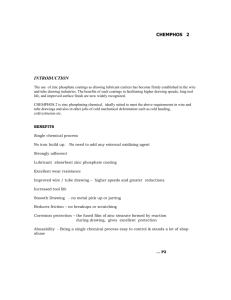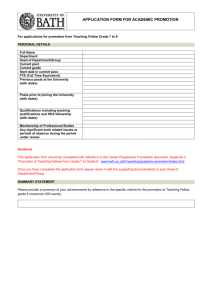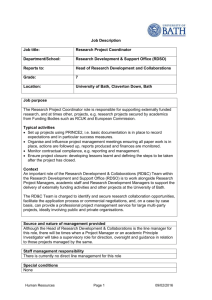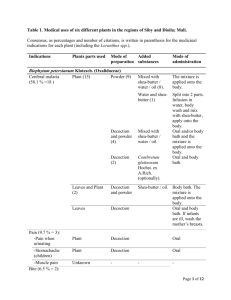LEVEL I – GRANT - Trinity Valley Community College
advertisement
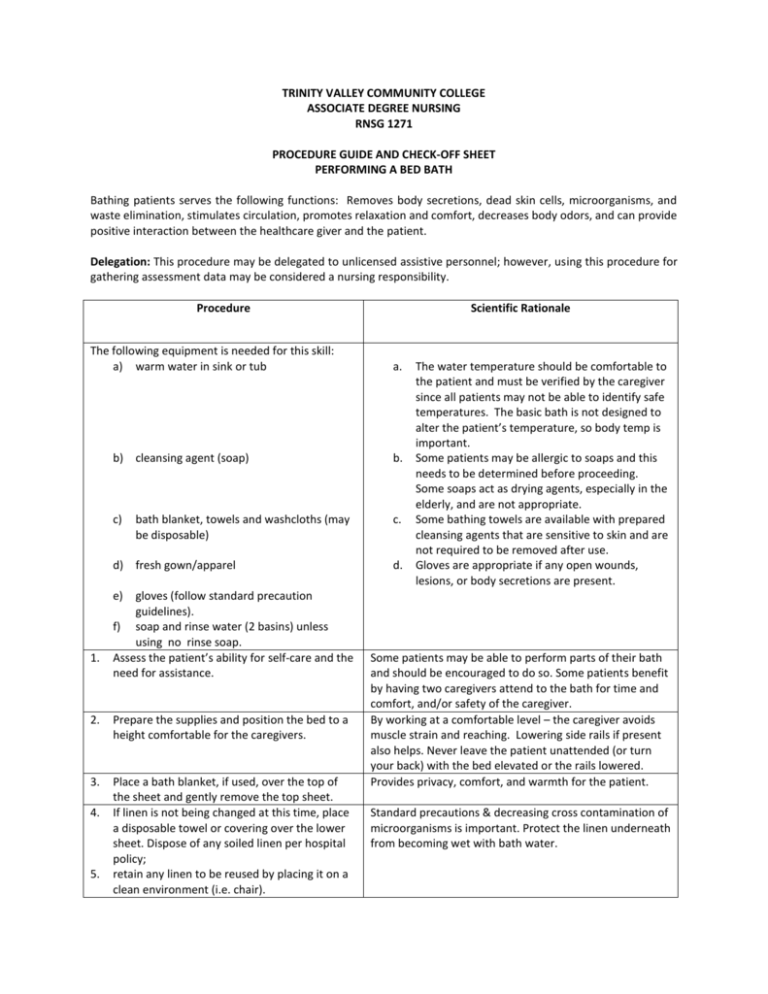
TRINITY VALLEY COMMUNITY COLLEGE ASSOCIATE DEGREE NURSING RNSG 1271 PROCEDURE GUIDE AND CHECK-OFF SHEET PERFORMING A BED BATH Bathing patients serves the following functions: Removes body secretions, dead skin cells, microorganisms, and waste elimination, stimulates circulation, promotes relaxation and comfort, decreases body odors, and can provide positive interaction between the healthcare giver and the patient. Delegation: This procedure may be delegated to unlicensed assistive personnel; however, using this procedure for gathering assessment data may be considered a nursing responsibility. Procedure The following equipment is needed for this skill: a) warm water in sink or tub Scientific Rationale a. b) cleansing agent (soap) b. c) c. bath blanket, towels and washcloths (may be disposable) d) fresh gown/apparel e) 1. gloves (follow standard precaution guidelines). f) soap and rinse water (2 basins) unless using no rinse soap. Assess the patient’s ability for self-care and the need for assistance. d. The water temperature should be comfortable to the patient and must be verified by the caregiver since all patients may not be able to identify safe temperatures. The basic bath is not designed to alter the patient’s temperature, so body temp is important. Some patients may be allergic to soaps and this needs to be determined before proceeding. Some soaps act as drying agents, especially in the elderly, and are not appropriate. Some bathing towels are available with prepared cleansing agents that are sensitive to skin and are not required to be removed after use. Gloves are appropriate if any open wounds, lesions, or body secretions are present. 2. Prepare the supplies and position the bed to a height comfortable for the caregivers. 3. Place a bath blanket, if used, over the top of the sheet and gently remove the top sheet. If linen is not being changed at this time, place a disposable towel or covering over the lower sheet. Dispose of any soiled linen per hospital policy; retain any linen to be reused by placing it on a clean environment (i.e. chair). 4. 5. Some patients may be able to perform parts of their bath and should be encouraged to do so. Some patients benefit by having two caregivers attend to the bath for time and comfort, and/or safety of the caregiver. By working at a comfortable level – the caregiver avoids muscle strain and reaching. Lowering side rails if present also helps. Never leave the patient unattended (or turn your back) with the bed elevated or the rails lowered. Provides privacy, comfort, and warmth for the patient. Standard precautions & decreasing cross contamination of microorganisms is important. Protect the linen underneath from becoming wet with bath water. Procedure Scientific Rationale 7. 6. Remove the patient’s gown while keeping the patient covered with towel or blanket. Prepare a washcloth for use. 8. Begin washing the face (for total care bath): Maintaining a sense of privacy is important to patient self image. Making a mitt prevents dragging across the skin and retains heat and moisture. Systematically clean from the face downward to the feet. This promotes a sense of cleaning from the cleanest to the parts deemed less clean. a. Changing the washcloth to unused portions between strokes prevents cross contamination or microorganisms and secretions entering the lacrimal ducts. b. Some patient’s prefer not having soap used on their faces, due to the drying effect, so ask first. 6. a) Gently wash the patient’s eyes and dry them. Use a separate part of the washcloth for each area and stroke. Wipe from the inner eye toward the outer eye. b) Cleanse the rest of the patient’s face, ears, throat, and neck. c) Dry the areas just cleaned. 9. Wash and rinse the arms and hands: a. Elevate and support each appendage at the joints. Use long, firm, strokes from wrist to shoulder, including under the arm. c. Place the patient’s hand in a basin if used, and allow to soak briefly, then focus on cleaning the nails and between the digits. d. Dry each appendage after cleansing. 10. Wash the chest and abdomen: a. Keep a towel or cover over the breasts while cleaning. b. Carefully include skin folds, such as under a breast. c. Rinse and dry well. 11. Wash and rinse the legs and feet: a. Keep a covering over the perineal area. Remember to protect the lower linens. b. Cleanse each leg using firm, long stokes from the ankle to the thigh. a. b. c. d. The feet may be washed by placing them in the basin. Change the water as needed if it becomes cool or dirty. Dry each foot carefully, between toes and spaces between toes. e. Replace wash and rinse water and wash cloths prior to washing the back. 12. Place the patient in a comfortable, lateral position facing away from the caregiver and b. c. a. b. Elevation promotes circulation in the extremities through venous return. Firm strokes promote circulation. Immersing the hands in water helps loosen dirt under the nails and soothes some patients. Patient privacy should be maintained. Skin folds often harbor microorganisms from perspiration and moisture and are easily irritated. a. Privacy and dignity should be retained for the patient. b. Distal toward proximal movement promotes circulation through venous return blood flow. c. Remember that dark skin patients have darker cells that may be removed, and the water may appear dirty, but that does not mean that the patient is less clean than lighter skinned patients. d. Discuss cross contamination of microorganisms. Proper positioning decreases back strain and stretching for the caregiver. Procedure wash the backside and then the perineum: a. Keep the patient covered as much as possible. Lay a covering over the lower linen. b. c. Wash and dry from the shoulders toward the lower back, buttocks, and upper a. thighs. Carefully wash and dry between any gluteal folds. d. Perform a back massage if appropriate. 13. 13. For patients unable to perform perineal care, reposition the patient and complete that portion of the bath. Note: Refer to perineal cleaning procedure. 14. Remove wet and used linen discarding according to hospital policy and standard precautions. 15. 15. Assist the patient with clean apparel (gown or own clothes) and perform additional hygiene and grooming activities such as powder, hair combing, oral care, deodorant. 16. Position the patient for comfort and safety. Return the side rails and place the bed in the desired position. Leave the patient with call light and room controls within easy reach. 17. Document the bath and any assessment data observed during the procedure. 18. Considerations for the elderly: Moisturize after the bath and use powder sparingly. 19. Considerations for the infant: Sponge baths are suggested and the infant should be dried and wrapped immediately. N:ADN/Procedures/Bed Bath Scientific Rationale a. Keeping the patient covered to provide warmth and privacy while the bath is completed. b. Protect the lower linen unless planning to change soiled or wet sheets. Cleanse from the least soiled to the most soiled areas. Skin folds are moist dark areas and may harbor microorganisms. c. Some patients with upper arm strength and mobility prefer cleaning themselves. The caregiver is still responsible for assessing the area. Use powder sparingly since unnecessary release of powder can irritate respiratory tracts and excess powder can cause caking in folds which act as a skin irritant. Cleaning and straightening the patient’s environment after bathing is good time management. The caregiver is responsible for the patient’s environment and an orderly and safe environment increases self esteem and dignity. Hospitals may have a checklist format for bath completion, delineating between partial and total bed baths. Assessment data would be additional documentation in the nurse’s notes. Elderly may have decreased skin oils, fragile skin, and less elasticity from lack of moisture in the skin. Daily tub baths are not considered necessary for infants and the infant’s thermoregulatory system is immature and allows heat loss more readily. Reviewed 04/14


